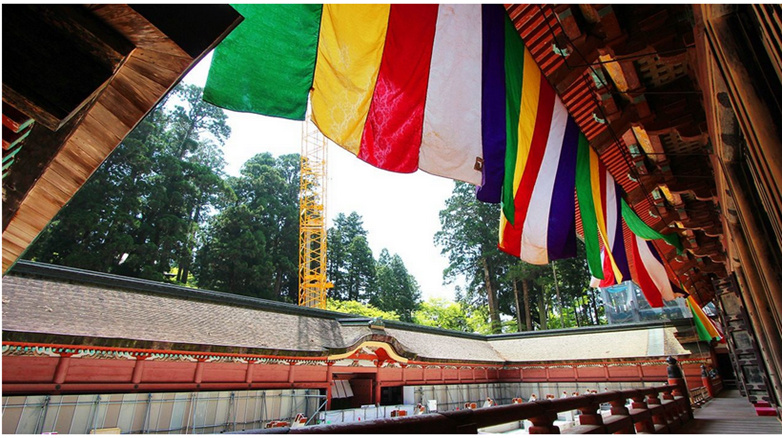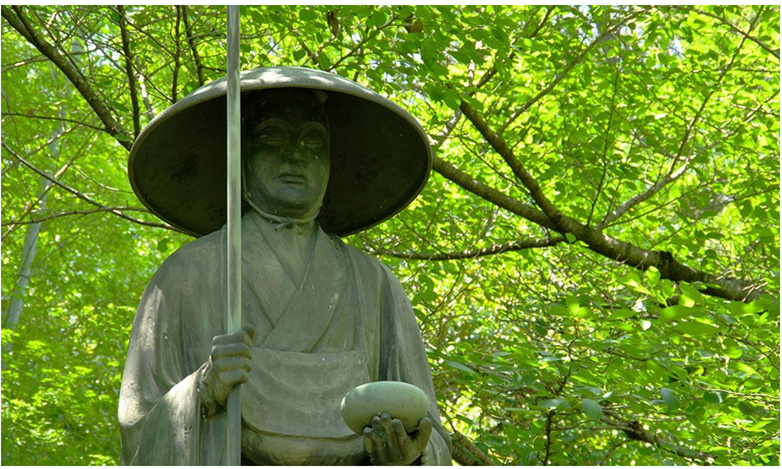The secularization of Japanese Buddhism in the Meiji Renaissance

The government at the beginning of the Meiji Renaissance made efforts to promote Shintoism as the primary religion for the new emperor-centered government. Later, Buddhism was seen as a desirable partner in this project. Indeed, the practices of deeply rooted Buddhism underwent major changes as Japanese Buddhism transformed into a secular organization that adopted doctrines that departed far from the original teachings of Shakyamuni.
Purging the centers of power from Buddhism
Japanese Buddhism during the Edo period worked alongside the shogunate government and enjoyed influence and authority in society. But as political power in the country shifted from the samurai class to the emperor with the start of the Meiji Renaissance in 1868, Buddhism's position suddenly became unstable. The new government's policy was to use a modern form of Shintoism, which embodies Japan's authentic religious traditions, in order to consolidate central state control under the leadership of the emperor. This policy was largely inspired by the models of European powers that built their modern colonial empires on the foundations of Christianity.
In Japan, Buddhism and Shintoism coexisted over several centuries and became closely intertwined, resulting in a unique form of syncretism. In the Edo period, Buddhism had the upper hand in its relations with Shintoism, but the situation has now turned and Buddhism is considered a stumbling block in the path of government policy. The Meiji government had to find a way to remove Buddhism from the power structure and raise Shintoism to an unprecedented status.

The government decreed a legal separation between Buddhism and Shintoism, which were intricately intertwined as part of the power structure during the Edo period. The law was not intended to pressure people to abandon their Buddhist faith, but rather to weaken Buddhism's ties to state power.
But the close relationship that Buddhism enjoyed with the ruling authority during the period of the shogunate governments led to widespread dissatisfaction with this religion, and its influence reached its peak in the wake of the new law separating Buddhism from Shintoism. A wave of anti-Buddhist violence broke out across the country. This anti-Buddhist movement, called “Haibutsu Kishaku” in Japanese, led to the destruction of many Buddhist temples and the expulsion of Buddhist priests from their positions of authority. So much so that in some areas, almost all Buddhist temples - the number of which sometimes exceeded a thousand in one area - were destroyed or severely damaged.
A partnership between Buddhism and the Shinto state
Although the Haibutsu Kishaku movement caused widespread devastation, it also represented an exemplary opportunity for reform. Buddhism could no longer rely on the great protection it had enjoyed under the shogunate, and it lost popular support. But how was Buddhism able to survive and develop without this support? The various sects of Japanese Buddhism now set about searching for new ways forward.
The Meiji government's original plan was to employ Shintoism as the sole religious basis for the new emperor-centered government. But at that time, there were large amounts of important information about the population, including details of births, deaths, marriages, travel, and migration, concentrated in Buddhist temples under the “Danka” system for recording the data of the followers of the religion. Dismantling this system would have entailed enormous difficulties, so the government eventually changed its mind about Buddhism, realizing that it could serve to consolidate government control. The government began to think of Buddhism as an important partner in governing the country. At that time, the Shinto state was no longer considered just a religion, but rather a symbol of the essence of the Japanese state. At the same time, Buddhism was considered an officially sanctioned religion whose function was to work hand in hand with the central government.

This policy was appropriate for Buddhism, whose popularity had declined due to violence against it following the start of the Meiji Renaissance. Sects such as the Nishi Honganji school took the lead in developing positive relations with the Meiji government, developing new trends in Buddhist thought that combined elements of state Shintoism with more ancient teachings of Buddhism, and became involved in focusing on providing support to the Meiji government, using methods such as The development of new doctrines presented the emperor as a living embodiment of Buddha.
Also behind this cooperative relationship between the Meiji government and the Buddhist sects was the fear of Western countries that seemed intent on controlling the world through an authoritarian structure based on the Christian faith. The government and Buddhist sects viewed Christianity as an advance column for Western imperialism, and were determined to resist it. The two sides agreed on the need to work together to prevent Christianity from gaining a foothold and expanding its influence in Japan. But the policy of trying to restrict Christian influence later collapsed in the face of pressure from Western powers, and Christianity eventually found widespread acceptance in Japan, if not belief in this religion. But ironically, shortly after the Christian churches took root in Japan, they joined the Shinto state system centered around the figure of the emperor. This system of religious control that the government deliberately created has swallowed up all other religious organizations in the country, including Buddhist and Christian sects.
The secular trap
Let's go back to the early years of the Meiji Renaissance, specifically five years after the decree on the legal separation of Buddhism and Shintoism was issued in 1868. The Meiji government later realized that it could use Buddhism as a partner in governing the country and consolidate its control. So the government issued a stunning new decree allowing Buddhist priests to officially eat meat and marry.
The state essentially gave a guarantee that it would recognize any Buddhist priest with formal qualifications even if they lived a secular life. This decree was a turning point in the history of Japanese Buddhism, as it severed ties between traditional Buddhist practices in Japan and the Buddhist religion as it was practiced elsewhere in East Asia.

The Buddha did not prohibit priests from eating meat given to them as alms. In Sri Lanka and Southeast Asia, where many priests still live today as beggars, they are permitted to eat meat as long as they are not actively engaged in the process of slaughtering animals. This was the original lifestyle of Buddhist priests in the early stages of the history of this religion. But in China and other countries that embraced Mahayana Buddhism in East Asia, it is customary for Buddhist priests to abstain from eating meat out of respect for all sentient beings.
Japan inherited this tradition, and priests were supposed - at least officially - to be vegetarians. But the new government abolished with this decree the tradition of avoiding eating meat and remaining unmarried by priests. The government said at the time that there was nothing preventing Buddhist priests from eating meat, marrying and having children. It is clear that one of the consequences of this new decree was to strip Buddhism of its aura of holiness and spirituality, and to place priests on the same level as laity. It was a clever, carefully planned trap set by the Meiji government with the aim of depriving Buddhism of its authority and concentrating prestige in the person of the emperor.
Japanese Buddhism fell into the trap and eagerly embraced the secular way of life. Although some priests rejected the edict and preferred to maintain the "purity" of Buddhism, most chose to conform to the government's directives and adopted a secular lifestyle as ordinary members of society, rather than choosing to defend their pride as Buddhist priests.

And let us not forget that one of the things that distinguishes Japanese Buddhism from that of other countries is its lack of the disciplined Vinaya Pitaka system of the Sangha community. If Japanese priests had lived according to the teachings of these ethical rules, the government decree would certainly have sparked a serious debate within the Sangha as to which was more important: a rule issued by the central government or the Vinaya Pitaka rules established by Shakyamuni? The view that sacred teachings must take precedence will certainly be victorious. Perhaps the Sangha community would submit a petition to the government stating that the new decree is unacceptable because it conflicts with the disciplinary rules that have governed the behavior of Buddhist priests for 2,500 years, and asking the government to withdraw the decree.
But this debate did not actually take place. Although some people objected to the decree, Japanese Buddhism as a whole chose to abandon its sacred nature and adopt a secular lifestyle. This matter would not have been possible without the failure of Japanese Buddhism in not introducing the Vinaya Pitaka system, which regulates the behavior of priests and ensures the purity and sanctity of society. The Meiji government successfully focused on the greatest weakness of Japanese Buddhism and was able to remove this religion from the center of political influence.
Buddhism and engaging in war
After losing the aura of holiness that surrounded it and becoming just another member of secular society, Japanese Buddhism turned into a kind of professional organization whose role was to cooperate with the government in defending the nation and supporting the system of state control centered on the emperor. When Japan later turned to militarism, all the different sects cooperated in the war effort, raising money to fight, pressuring their faithful to join the armed forces, and even preaching that dying for the country represented the highest path to heaven. Buddhism became shamelessly engaged in a whole range of immoral behaviors that would have been intolerable under the Vinaya Pitaka system.

But when Japan surrendered unconditionally to the Allied powers in 1945, the motivation behind these behaviors collapsed, and Japanese Buddhism was left without any lofty moral purpose. The state's authority and the protection it provided to Buddhism, which had already chosen to shed much of its religious aura, vanished. The political trend in the post-war years was to exclude religion from government spaces. In light of the restriction of its scope of activity in the public sphere, Japanese Buddhism was forced to find a new role for itself. In the following years, it made a new start relying on the Danka system of recording household data, which had been in effect since the Edo period, and was its only hope for economic survival.
Source : websites

